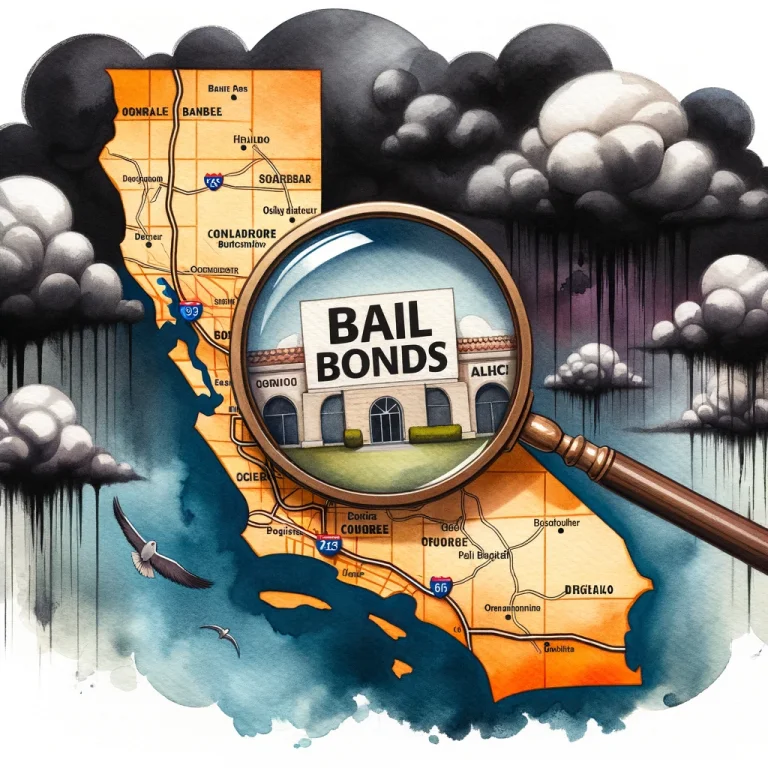In the ever-evolving landscape of criminal justice, California has been at the forefront of progressive reforms, and one significant area of transformation has been its approach to bail. Recent changes in the state’s bail system aim to address issues of fairness and equality. This blog will investigate the key elements of California’s bail reform, explore their implications on the legal landscape, and analyze the ripple effects on the bail bond industry.
I. The Genesis of Bail Reform in California:
a. Pre-Reform Bail System:
Before delving into recent changes, it’s essential to understand the shortcomings of the traditional bail system. Critics argued that it disproportionately impacted low-income individuals who couldn’t afford bail, resulting in pre-trial detention solely based on financial status.
b. Calls for Reform:
Advocacy groups, legal scholars, and policymakers called for reform to address the inequities inherent in the bail system. The push for change gained momentum, leading to a reevaluation of California’s bail policies.


II. Key Components of California's Bail Reform:
a. Shift Towards Risk Assessment:
One significant change involves a shift from a monetary-based bail system to a risk assessment model. Courts now consider factors such as the severity of the offense, criminal history, and flight risk to determine whether a defendant should be released pre-trial.
b. Implementation of SB 10:
Senate Bill 10 (SB 10), also known as the California Money Bail Reform Act, played a pivotal role in reshaping the state’s approach to bail. The bill aimed to replace the cash bail system with a risk assessment process.
III. Implications for Defendants:
a. Fairness and Equal Treatment:
The reform intends to promote fairness by reducing the impact of financial status on pre-trial release. Defendants are now assessed on individual risk factors rather than their ability to pay bail.
b. Reducing Pre-Trial Detention:
The shift towards risk assessment aims to decrease the number of individuals held in pre-trial detention, providing a more balanced approach to justice.
c. Potential for Overreliance on Algorithms:
Critics argue that relying on risk assessment algorithms may introduce biases and perpetuate existing inequalities. The challenge lies in creating a system that is truly fair and free from systemic biases.


IV. Impact on the Bail Bond Industry:
a. Decreased Demand for Traditional Bail Bonds:
With a move away from cash bail, there is a potential decrease in the demand for traditional bail bonds. Defendants who would have previously sought the services of bail bondsmen may now have alternative avenues for release.
b. Adaptation and Diversification:
Bail bond agencies are adapting to the changing landscape by diversifying their services. Some are exploring options such as offering GPS monitoring or other non-financial release solutions.
c. Challenges and Uncertainties:
The reform presents challenges for the bail bond industry, including uncertainty about the future demand for their services and the need to navigate a shifting regulatory environment.
V. Public Response and Controversies:
a. Mixed Reactions:
Public reactions to the bail reform have been mixed. While some applaud the efforts to create a fairer system, others express concerns about potential unintended consequences.
b. Legal Challenges:
The reform has faced legal challenges from various quarters, including proponents of the traditional bail system. Legal battles over the constitutionality and implementation of the reforms continue.


VI. Looking Ahead: The Future of Bail in California:
a. Monitoring and Adjustments:
The success of California’s bail reform will depend on ongoing monitoring and adjustments to address any unforeseen challenges. Stakeholders must remain vigilant in assessing the impact of these changes.
b. National Implications:
California’s journey towards bail reform has national implications. Other states are closely watching these developments, considering similar reforms, or learning from the challenges faced by California.
VII. Conclusion:
California’s bail reform represents a significant step towards a more equitable and just criminal justice system. While the shift away from cash bail brings positive changes, it also poses challenges for the bail bond industry. As the state continues to navigate these changes, the balance between fairness, public safety, and the livelihood of the bail bondsmen remains a delicate one. The story of California’s bail reform is an evolving narrative, with lessons and insights that extend far beyond the state’s borders.

